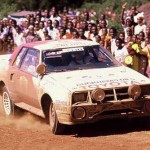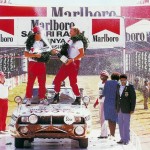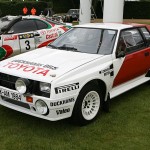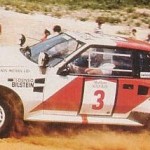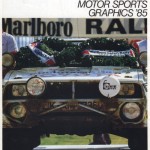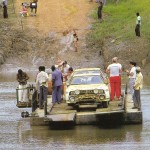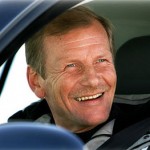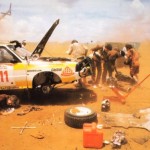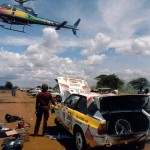Safari 1985: Kankkunen king at last
 It’s been well over 25 years since one of the world rally championship’s most successful drivers first climbed the top step of the podium.
It’s been well over 25 years since one of the world rally championship’s most successful drivers first climbed the top step of the podium.
Juha Kankkunen, who would go on to win 23 WRC events and claim four drivers’ titles, came to the East African Safari – the series’ toughest challenge – for the first time as part of the factory Toyota Team Europe squad. The young Finn, who turned 26 a few days before the Nairobi-based rally got underway, was making his eighth WRC start in the Celica Twin-Cam Turbo, an ultra-reliable Japanese machine that was perfect for the gruelling stages of the three-day event. The boxy, two-wheel-drive Celica was at a distinct disadvantage against the lighter, more powerful Group B, four-wheel-drive supercars from Audi and Peugeot on the shorter championship events, but in Africa, it was the car to have.
Round four of the 1985 WRC was Kankkunen’s big chance to get one over his illustrious team-mate, former world champion and two-time Safari winner Bjorn Waldegaard. With a previous best result of fifth on home soil – Finland’s 1000 Lakes – the year before, ‘KKK’ was keen to make the move up to WRC winner. And what better place than on this, the toughest rally of them all against a formidable line-up from Audi, Lancia, Nissan, Opel and Peugeot?
The Audi Quattro supercars of gea and Stig Blomqvist were early casualties, the cars’ new six-speed gearboxes giving up the ghost. The Martini-liveried works Lancia 037s of Markku Alen and Attilio Bettega also enjoyed a stint at the front before problems befell the Italian machines. That paved the way for the two-wheel-drive brigade to take over the scrap for the lead. The two Toyotas of Waldegaard and Kankkunen fought with the Opel Manta 400s of veteran Rauno Aaltonen and Safari first-timer Erwin Weber, while the two Nissan 240RS racers of Mike Kirkland and Alain Ambrosino gave chase.
Problems with the alternator on his Celica dropped leader Waldegaard down the order, leaving Aaltonen out front. The Finn was desperate to score that breakthrough win in an event he’d tried to master for more than 20 years. Sadly, it was destined not to be, for his Manta developed transmission trouble in the final stages, dropping him to sixth. Team-mate Weber then inherited the top spot, giving Opel renewed cause for optimism. Cruel luck intervened again, when a loose nut was ingested by the German’s Opel engine. A cylinder-head change was required, dropping him to fifth.
The topsy-turvy changes of lead made for an exciting final day, with Kankkunen keeping a watching brief behind the erstwhile leaders. He moved into the lead following Weber’s misfortune and went on to score a memorable debut Safari win. Waldegaard had fought back to second ahead of local ace Mike Kirkland’s Nissan and the recovering Aaltonen in the first of the Opel Mantas.
Kankkunen had realised his life’s ambition by winning a world championship rally for the first time. It was the start of hugely successful career in which the Finn would keep winning until the end of the 1990s and win four drivers’ titles for WRC giants Peugeot, Lancia and Toyota.
Despite making little impression on the leaders throughout the Safari, Peugeot’s Timo Salonen led the championship standings thanks to his seventh place finish.
Results
1st Juha Kankkunen (FIN)Fred Gallagher (GB) Toyota Celica TCT 5h 18m
2nd Bjorn Waldegaard (S)/Hans Thorszelius (S) Toyota Celica TCT 5h 52m
3rd Mike Kirkland (KEN)/Anton Levitan (KEN) Nissan 240RS 6h 01m
4th Rauno Aaltonen (FIN)/Lofty Drews (KEN) Opel Manta 400 6h 12m
5th Erwin Weber (D)/Gunter Wanger (D) Opel Manta 400 6h 36m
Read more feature stories here

